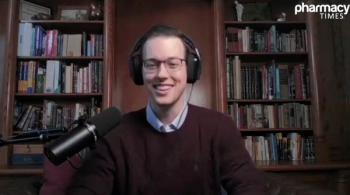
Medications for Opioid Use Disorder and HIV Prevention Go Hand in Hand
Pharmacists can implement several recommendations into their practice, regardless of the setting.
HIV is an infectious virus frequently transmitted through blood and it has spread during the opioid crisis. Since many patients with opioid use disorder are also people who inject drugs (PWID), increased HIV diagnoses is a consequence.
In February 2021, The Lancet published an analysis that explored HIV spread during the opioid crisis. The analysis examined the deadly synergy’s history, treatment barriers, and evidence-based interventions. While several effective interventions exist to combat HIV spread and opioid use disorder, patients face many barriers in accessing these resources. Syringe services programs (SSPs, or needle exchange programs), medications for opioid use disorder (MOUD), and psychosocial treatment are not universally available in the United States.
Scott County, Indiana, illustrates the many challenges that PWID face. In Scott County, SSPs were illegal and only 1 clinician with minimal experience in treating addiction and HIV served the entire county. As a result, the community faced a large HIV and hepatitis C outbreak, which researchers attribute to inadequate treatment and prevention resources. The Scott County case demonstrates how vulnerable rural communities are to the opioid and HIV epidemics.
As the best proven intervention for opioid use disorder, MOUD like methadone, buprenorphine, and naltrexone are extremely effective for HIV prevention. However, only 11% of patients receive MOUD. Patient barriers include stigma, no health insurance, and MOUD misinformation, among others. Furthermore, inadequate reimbursement and low prescription rates can prevent providers from treating opioid use disorder.
Despite progress in treating and preventing HIV in patients with opioid use disorder, these interventions cannot be successful unless health care professionals and policy makers eliminate the barriers. Researchers emphasized these key recommendations as follows:
- Diminish stigma
- Ensure universal health care for all PWID
- Expand primary care clinics to provide medical care and support for PWID
- Implement evidence-based approaches
- Increase research pertaining PWID
Furthermore, pharmacists can implement several recommendations into their practice, regardless of the setting. Many PWID face overwhelming stigma that may discourage them from pursuing treatment. Additionally, they may believe misinformation spread about treatment like MOUD. Pharmacists can be an empathetic resource for these patients, providing guidance without stigma. With this knowledge, pharmacists can help combat HIV spread in patients with opioid use disorder.
Alexandra Bieniek is a 2022 PharmD candidate at the University of Connecticut in Storrs.
REFERENCE
Hodder SL, Feinberg J, Strathdee SA, et al. The opioid crisis and HIV in the USA: deadly synergies. Lancet. 2021;397(10279):1139-1150. doi:10.1016/S0140-6736(21)00391-3
Newsletter
Stay informed on drug updates, treatment guidelines, and pharmacy practice trends—subscribe to Pharmacy Times for weekly clinical insights.













































































































































































































